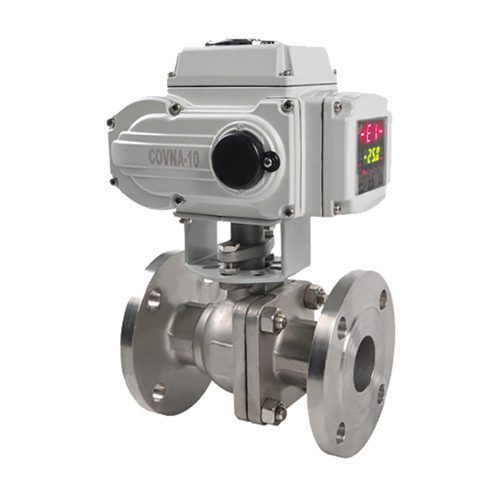Table of Contents
In any industrial setting, valves play a crucial role in controlling the flow of fluids or gases. These valves are used in various applications and are subjected to regular wear and tear. To ensure their optimal performance and prevent any unexpected failures, it is essential to conduct preventive maintenance and testing procedures on ON OFF valves. This article will provide a comprehensive guide on the preventive maintenance and testing procedures for ON OFF valves.
Introduction
ON OFF valves are used to start or stop the flow of fluids or gases in pipelines. They are commonly found in industries such as oil and gas, chemical, petrochemical, and power generation. Preventive maintenance and testing procedures are necessary to ensure that these valves operate effectively and reliably.

Importance of Preventive Maintenance
Preventive maintenance helps in identifying and addressing potential issues before they escalate into major problems. It reduces the risk of valve failures, improves safety, and enhances the overall efficiency of the system. By following a systematic preventive maintenance plan, the lifespan of ON OFF valves can be significantly extended.
Tools and Equipment Required
Before starting the preventive maintenance and testing procedures, gather the following tools and equipment:
- Safety gloves and goggles
- Wrenches and screwdrivers
- Lubricants
- Cleaning materials
- Leak detection solution
- Pressure gauge
- Calibration equipment
Visual Inspection
Begin the maintenance process with a visual inspection of the ON OFF valve. Look for any signs of damage, corrosion, or leakage. Ensure that the valve is properly installed and aligned. Check for loose connections or missing parts. Document any issues found during the inspection.
Lubrication
Proper lubrication is crucial for the smooth operation of ON OFF valves. Apply a suitable lubricant to the valve stem, bonnet, and other moving parts. Lubrication reduces friction, prevents wear and tear, and enhances the valve’s lifespan. Follow the manufacturer’s guidelines for the type and quantity of lubricant to be used.
Valve Actuation Test
To test the functionality of the ON OFF valve, perform a valve actuation test. Open and close the valve several times to ensure that it moves freely without any sticking or binding. Observe the valve’s response and listen for any unusual noises. If any issues are detected, further investigation or repairs may be required.
Leak Testing
Leakage is a common problem in valves and can lead to significant losses or safety hazards. Conduct a leak testing procedure to identify any potential leaks. Apply a leak detection solution around the valve body, connections, and seals. If bubbles appear, it indicates the presence of a leak. Take necessary measures to repair the leak or replace faulty components.
Calibration
Accurate calibration of ON OFF valves is vital for precise flow control. Use a pressure gauge and calibration equipment to verify the valve’s performance against specified parameters. Adjust the valve if necessary to ensure its proper functioning within the desired range. Document the calibration results for future reference.
Documentation
Maintaining proper documentation is essential for effective preventive maintenance. Create a comprehensive record of all maintenance activities, including inspection findings, lubrication details, test results, and any repairs or replacements performed. This documentation will serve as a valuable reference for future maintenance tasks and can help in identifying recurring issues.
Common Issues and Troubleshooting
Despite regular preventive maintenance, ON OFF valves may encounter certain issues. Some common problems include leakage, sticking, excessive noise, or failure to actuate. Troubleshoot these issues by examining the affected components, checking for obstructions, or consulting the manufacturer’s guidelines. Document the troubleshooting process and the solutions implemented.
Conclusion
Preventive maintenance and testing procedures are crucial for ensuring the reliable and efficient operation of ON OFF valves. By following the outlined steps, industrial facilities can minimize the risk of unexpected failures, enhance safety, and prolong the lifespan of these valves. Regular maintenance and adherence to best practices will contribute to the overall success of the system.
FAQs
Q: How often should ON OFF valves undergo preventive maintenance?
A: The frequency of preventive maintenance depends on various factors, including the type of valve, operating conditions, and manufacturer’s recommendations. It is typically performed annually or semi-annually.
Q: Can I use any type of lubricant for ON OFF valves?
A: It is recommended to use lubricants specifically designed for valve applications. Consult the manufacturer’s guidelines for the appropriate lubricant to be used.
Q: What should I do if I detect a leak in an ON OFF valve?
A: If a leak is detected, first isolate the valve to stop the flow. Then, identify the source of the leak and take appropriate measures to repair or replace the faulty components.
Q: Why is calibration important for ON OFF valves?
A: Calibration ensures that the valve operates accurately within the desired parameters, enabling precise flow control and system efficiency.
Q: What should be included in the maintenance documentation?
A: The maintenance documentation should include inspection findings, lubrication details, test results, repairs or replacements performed, and any troubleshooting procedures undertaken.
Read Also
- Troubleshooting common Control Valve Problems
- How to Solve On-Off Valve Problems ?
- Control valve Leakage Problem
- Pressure Control Valve
- Control Valve Positioner